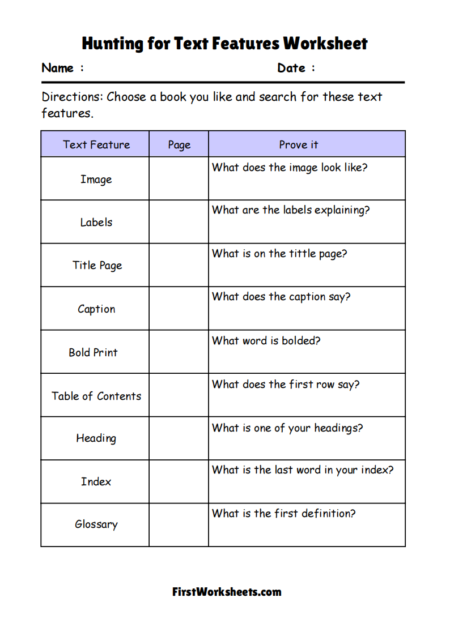3rd Grade Reading WorksheetsReading Worksheets
Reading worksheets for 3rd graders are designed to help students develop and strengthen their reading comprehension skills. At this stage, students transition from learning to read to reading to learn. This means they begin to engage with more complex texts and are expected to analyze, interpret, and discuss what they read. These worksheets often include various exercises that focus on different reading skills, including comprehension, vocabulary, and text analysis.
Key Features of 3rd Grade Reading Worksheets
- Reading Comprehension Passages:
- Length and Complexity: Texts in 3rd grade worksheets are longer and more complex than those in earlier grades. They typically range from 200 to 500 words, including both fiction (stories, fables) and non-fiction (informational texts, biographies).
- Themes and Genres: Topics cover a wide range of genres like fairy tales, historical events, science topics, and biographies. This variety helps students get exposed to different writing styles and subject matters.
- Question Types: After reading the passage, students encounter different types of questions, including:
- Literal Questions: Ask for direct information from the text.
- Inferential Questions: Require students to make inferences based on evidence in the text.
- Critical Thinking Questions: Encourage students to form opinions or relate the text to their own experiences.
- Main Idea and Details: Worksheets often include exercises that ask students to identify the main idea of the passage and supporting details. This helps in honing their summarizing skills.
- Vocabulary Development:
- Context Clues: Students learn to use context clues to determine the meaning of unfamiliar words. Worksheets may include bolded or underlined words within the passage, followed by questions that ask students to infer their meanings.
- Word Analysis: Activities might involve breaking down words into prefixes, suffixes, and root words, which helps students understand complex vocabulary.
- Synonyms and Antonyms: Exercises often focus on understanding words with similar or opposite meanings, which expands their vocabulary and improves comprehension.
- Text Features and Structure:
- Text Features: Third-grade reading worksheets introduce students to various text features commonly found in non-fiction texts, such as:
- Headings and Subheadings: Help students identify the main topics of each section.
- Bold and Italic Text: Used to highlight important information or vocabulary.
- Captions and Labels: Provide additional information about pictures, charts, or diagrams included in the passage.
- Organizational Structures: Worksheets help students recognize different text structures such as:
- Chronological Order: Events described in the order they happened.
- Cause and Effect: Identifying relationships between events or ideas.
- Compare and Contrast: Highlighting similarities and differences between two concepts or items.
- Text Features: Third-grade reading worksheets introduce students to various text features commonly found in non-fiction texts, such as:
- Reading Strategies:
- Prediction: Worksheets often include activities that encourage students to predict what will happen next in a story, based on the information provided.
- Summarization: Students are asked to summarize passages in their own words, focusing on the main idea and key details.
- Making Connections: Encouraging students to connect the text to their own experiences, other texts, or world events to deepen understanding.
- Visualizing: Some worksheets ask students to draw scenes described in the text, helping them create mental images to improve comprehension.
- Grammar and Syntax Focus:
- Sentence Structure: Students might work on identifying different sentence types (simple, compound) within the passage to improve their understanding of syntax.
- Punctuation and Capitalization: Exercises may include correcting sentences to enhance grammar skills.
- Interactive Elements:
- Graphic Organizers: Worksheets may include graphic organizers like story maps, Venn diagrams, and charts that help students organize information from the text visually.
- Activities and Games: Engaging activities like crossword puzzles, word searches, and matching exercises related to the text content.
Importance of Text Features in 3rd Grade Reading Worksheets
Text features are crucial for 3rd graders as they help students navigate and understand complex texts more effectively. Here’s how they are typically used in reading worksheets:
- Headings and Subheadings: Help students quickly identify the main topics and organize information. Worksheets might include exercises where students have to match headings with their corresponding paragraphs or identify the main idea of each section.
- Bold and Italicized Words: Highlight key terms or concepts. Students may be asked to define these words or explain their significance in the context of the passage.
- Diagrams and Charts: Non-fiction passages often include diagrams, charts, or maps. Worksheets may include questions that require students to interpret these visuals, linking them to the text for a deeper understanding.
- Glossary and Index Usage: Some worksheets teach students how to use a glossary and index to find information efficiently.
Sample Activities in 3rd Grade Reading Worksheets
- Reading Passage with Questions: A short story or informational text followed by multiple-choice, true/false, and open-ended questions.
- Vocabulary in Context: Identify the meaning of underlined words in a passage using context clues.
- Main Idea and Details: Highlight or underline sentences in the text that support the main idea.
- Graphic Organizer Completion: Fill in a story map or cause-and-effect chart based on the passage.
- Text Feature Hunt: A worksheet with a non-fiction passage where students must circle or highlight text features like headings, bold words, and captions.
By incorporating these elements, reading worksheets for 3rd graders not only improve reading skills but also prepare students for more advanced literacy tasks in higher grades.
